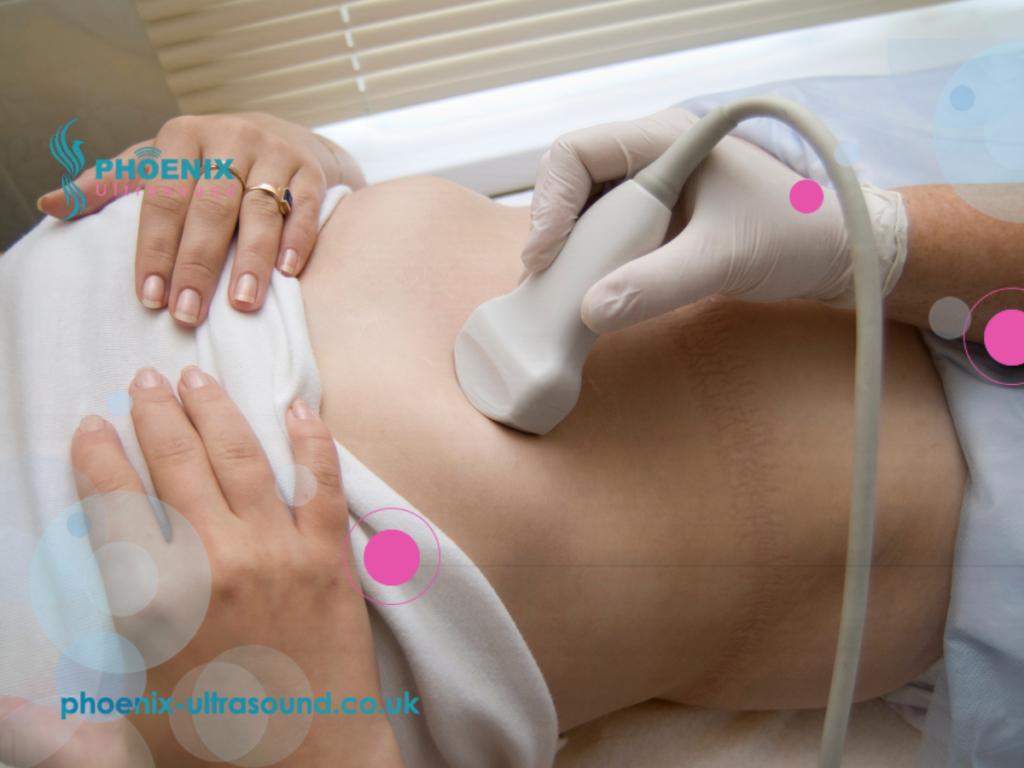At Phoenix Ultrasound Clinic, we specialize in providing ultrasound imaging of the kidneys, ureters, and bladder (KUB) to help diagnose and monitor a variety of conditions. A kidney, ureter and bladder scan (KUB) is a safe, non-invasive imaging test that uses sound waves to create a picture of the organs in the upper abdomen. It is used to diagnose and monitor many different conditions, such as kidney stones, bladder infections, and kidney disease, as well as to measure the size of the kidneys and bladder and check for blockages in the ureters. A KUB ultrasound provides valuable information about the structure of these organs without any radiation exposure, helping doctors make accurate diagnoses and treatment plans.
What is a Kidneys, Ureters, and Bladder Ultrasound?
A kidney, ureter and bladder scan (KUB) is a type of imaging test that uses sound waves to create a picture of the organs in the upper abdomen. This type of ultrasound is used to diagnose and monitor many different conditions, such as kidney stones, bladder infections, and kidney disease. It is also used to measure the size of the kidneys and bladder and check for any blockages in the ureters.
How is a Kidneys, Ureters, and Bladder Ultrasound Performed?
A KUB ultrasound is a simple, non-invasive procedure that takes about 10-15 minutes to complete. During the procedure, a technician will place a small probe on the abdomen. The probe then sends sound waves through the skin and into the body, which bounce off the organs and are picked up by the probe. The sound waves create a picture of the organs, which the technician can then view on a computer screen. According to the my.clevelandclinic.org, this is how a kidney ultrasound works:
A kidney ultrasound is safe, noninvasive and doesn’t hurt. Your healthcare provider moves a device called a transducer over the top of your skin. The transducer releases sound waves which penetrate your skin and bounce off your internal organs and tissues. These sound waves create echoes that transform into images or videos your healthcare provider can see on a screen. Your provider then looks at the ultrasound images and analyzes them for any potential problems.
What Does a Kidneys, Ureters, and Bladder Ultrasound Show?
A KUB ultrasound can show the size and structure of the kidneys, ureters, and bladder. It can also detect any masses, cysts, or blockages in the organs and can help diagnose conditions like kidney stones, bladder infections, and kidney disease. In cases where an issue is suspected, an abnormal kidney ultrasound can provide crucial information for diagnosis and guide further treatment. The test can also help doctors monitor the progress of certain treatments, such as dialysis.

What Are the Benefits of a Kidneys, Ureters, and Bladder Ultrasound?
A KUB ultrasound is a safe, non-invasive procedure with no risk of radiation exposure. It is also a cost-effective way to diagnose and monitor a variety of conditions. Additionally, the test results are immediately available and can provide doctors with valuable information to help them make an accurate diagnosis and treatment plan.

Conclusion
At Phoenix Ultrasound Clinic, we specialize in providing ultrasound imaging of the kidneys, ureters, and bladder. A KUB ultrasound is a non-invasive imaging technique used to check the size and structure of the organs and can help diagnose and monitor many different conditions. If you have questions or would like to learn more about this imaging technique, contact our clinic today.
Frequently Asked Questions
Q: What is a Kidneys, Ureters, and Bladder Ultrasound?
A: A KUB ultrasound is a type of imaging test that uses sound waves to create a picture of the organs in the upper abdomen. It is used to diagnose and monitor many different conditions, such as kidney stones, bladder infections, and kidney disease.
Q: How is a Kidneys, Ureters, and Bladder Ultrasound Performed?
A: A KUB ultrasound is a simple, non-invasive procedure that takes about 10-15 minutes to complete. During the procedure, a technician will place a small probe on the abdomen, which sends sound waves through the skin and into the body. The sound waves create a picture of the organs, which the technician can then view on a computer screen.
Q: What Does a Kidneys, Ureters, and Bladder Ultrasound Show?
A: A KUB ultrasound can show the size and structure of the kidneys, ureters, and bladder. It can also detect any masses, cysts, or blockages in the organs and can help diagnose conditions like kidney stones, bladder infections, and kidney disease.
I’ve been looking into a kidney, ureter and bladder scan recently. Can someone explain what a KUB ultrasound actually shows in simple terms?
I had a KUB ultrasound last month for kidney pain — it was super quick and painless. The technician explained everything clearly, which helped calm my nerves.
This was really informative! I didn’t realise the scan could show both kidney stones and bladder issues.
I had to get a KUB ultrasound last month because of suspected kidney stones. The scan was quick but honestly, I still left with more questions than answers. They showed me images but didn’t really explain much.
Had a kidney ureter bladder scan once… the gel was colder than my ex’s heart, but at least the procedure was painless 😂
I appreciate how clear this explanation is. I’ve been referred for a KUB scan because of recurrent UTIs and wasn’t sure what it actually involved.
Does anyone know the average KUB ultrasound price in private clinics? I keep seeing different numbers everywhere